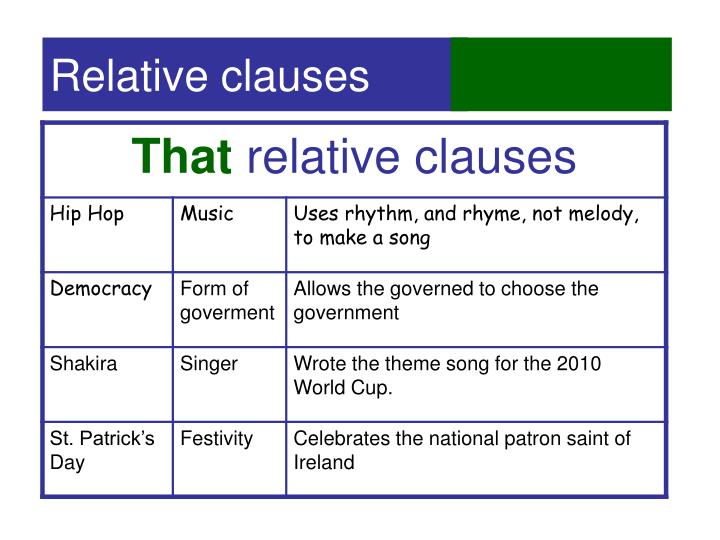Relative Clauses - Relative Clauses Year 5 Grammar Worksheets Lesson Pack Plazoom : The basic relative pronouns are who, which, and that;
Relative Clauses - Relative Clauses Year 5 Grammar Worksheets Lesson Pack Plazoom : The basic relative pronouns are who, which, and that;. It is sometimes called an adjective clause because it functions like an adjective—it gives. Defining relative clauses (also called identifying relative clauses or restrictive relative clauses) give detailed information defining a general term or expression. Relative clauses tell us more about people and things: Various grammatical rules and style guides determine which relative pronouns may be suitable in. When to use which and.
They are most often used to define or identify the noun that precedes them. This is the house which jack built. Relative clauses can cause trouble in english, specially when they begin with less common forms of the pronoun who, such as whom? What exactly is a relative clause and how can it be used? Relative clauses (also known as adjective clauses or adjectival clauses) are dependent clauses that provide descriptive information about a noun or noun phrase.

In the sentence the dragon who breathed blue fire has retired.
A relative clause is one kind of dependent clause. Defining relative clauses don´t use commas and provide necessary information to. They may add meaning, but if they are removed, the sentence will still function grammatically. A relative clause is a sentence describing a noun, however, it cannot be used separately. It is also called adjective clause because it defines a noun. Various grammatical rules and style guides determine which relative pronouns may be suitable in. They are most often used to define or identify the noun that precedes them. What is a relative clause? Relative pronouns and relative clauses connect two ideas into one sentence. Relative clauses allow us to provide additional information without having to start a new sentence. They commonly qualify or give more information about a noun. Relative clauses (also known as adjective clauses or adjectival clauses) are dependent clauses that provide descriptive information about a noun or noun phrase. In the sentence the dragon who breathed blue fire has retired.
Relative clauses allow us to provide additional information without having to start a new sentence. Relative clauses tell us more about people and things: Relative clauses (also known as adjective clauses or adjectival clauses) are dependent clauses that provide descriptive information about a noun or noun phrase. Defining relative clauses (also called identifying relative clauses or restrictive relative clauses) give detailed information defining a general term or expression. The basic relative pronouns are who, which, and that;

A relative clause is one kind of dependent clause.
In the sentence the dragon who breathed blue fire has retired. A relative clause is a clause that usually modifies a noun or noun phrase and is introduced by a relative positioning relative clauses unlike prepositional phrases, restrictive relative clauses. Relative clauses (also known as adjective clauses or adjectival clauses) are dependent clauses that provide descriptive information about a noun or noun phrase. Relative clauses allow us to provide additional information without having to start a new sentence. In this article, we are going to take a look at the answers to both of these questions by looking at some examples of relative clauses in use. Lord thompson, who is 76, has just retired. Relative clauses can cause trouble in english, specially when they begin with less common forms of the pronoun who, such as whom? Various grammatical rules and style guides determine which relative pronouns may be suitable in. Relative pronouns and relative clauses connect two ideas into one sentence. This is the house which jack built. Relative clauses tell us more about people and things: Relative clauses in the english language are formed principally by means of relative pronouns. Relative clauses are clauses starting with the relative pronouns who*, that, which, whose, where, when.
What is a relative clause? When to use which and. Lord thompson, who is 76, has just retired. Various grammatical rules and style guides determine which relative pronouns may be suitable in. A relative pronoun is a word like that or which or who, so a relative clause is a clause that begins with a relative pronoun.

Relative clauses (also known as adjective clauses or adjectival clauses) are dependent clauses that provide descriptive information about a noun or noun phrase.
In the sentence the dragon who breathed blue fire has retired. Defining relative clauses are not put in. This is why they are also known as adjective clauses. A relative clause is a sentence describing a noun, however, it cannot be used separately. Various grammatical rules and style guides determine which relative pronouns may be suitable in. A relative clause is a subordinate clause that contains the element whose interpretation is provided by an expression on which the subordinate clause is grammatically dependent. They may add meaning, but if they are removed, the sentence will still function grammatically. It has a subject and verb, but can't stand alone as a sentence. In this article, we are going to take a look at the answers to both of these questions by looking at some examples of relative clauses in use. Relative clauses are clauses starting with the relative pronouns who*, that, which, whose, where, when. The relative pronoun is the subject the relative clause can come after the subject or the object of the sentence. Relative clauses tell us more about people and things: Who also has the derived forms whom and whose.
Komentar
Posting Komentar